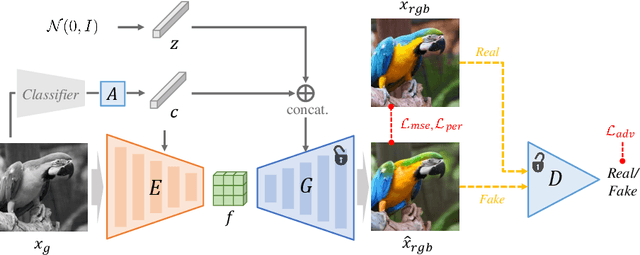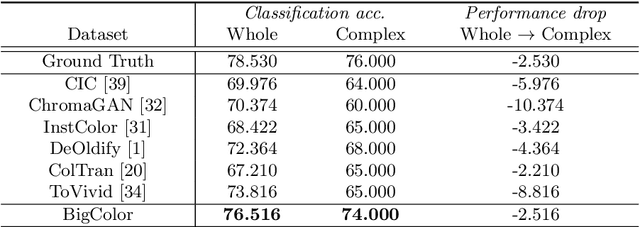Hwayoon Lee
UGPNet: Universal Generative Prior for Image Restoration
Dec 31, 2023



Abstract:Recent image restoration methods can be broadly categorized into two classes: (1) regression methods that recover the rough structure of the original image without synthesizing high-frequency details and (2) generative methods that synthesize perceptually-realistic high-frequency details even though the resulting image deviates from the original structure of the input. While both directions have been extensively studied in isolation, merging their benefits with a single framework has been rarely studied. In this paper, we propose UGPNet, a universal image restoration framework that can effectively achieve the benefits of both approaches by simply adopting a pair of an existing regression model and a generative model. UGPNet first restores the image structure of a degraded input using a regression model and synthesizes a perceptually-realistic image with a generative model on top of the regressed output. UGPNet then combines the regressed output and the synthesized output, resulting in a final result that faithfully reconstructs the structure of the original image in addition to perceptually-realistic textures. Our extensive experiments on deblurring, denoising, and super-resolution demonstrate that UGPNet can successfully exploit both regression and generative methods for high-fidelity image restoration.
BigColor: Colorization using a Generative Color Prior for Natural Images
Jul 20, 2022



Abstract:For realistic and vivid colorization, generative priors have recently been exploited. However, such generative priors often fail for in-the-wild complex images due to their limited representation space. In this paper, we propose BigColor, a novel colorization approach that provides vivid colorization for diverse in-the-wild images with complex structures. While previous generative priors are trained to synthesize both image structures and colors, we learn a generative color prior to focus on color synthesis given the spatial structure of an image. In this way, we reduce the burden of synthesizing image structures from the generative prior and expand its representation space to cover diverse images. To this end, we propose a BigGAN-inspired encoder-generator network that uses a spatial feature map instead of a spatially-flattened BigGAN latent code, resulting in an enlarged representation space. Our method enables robust colorization for diverse inputs in a single forward pass, supports arbitrary input resolutions, and provides multi-modal colorization results. We demonstrate that BigColor significantly outperforms existing methods especially on in-the-wild images with complex structures.
 Add to Chrome
Add to Chrome Add to Firefox
Add to Firefox Add to Edge
Add to Edge